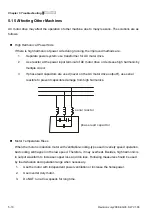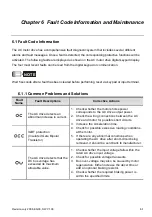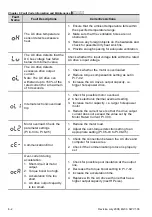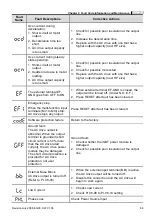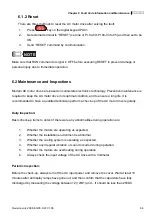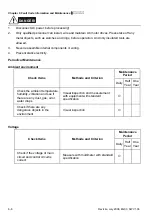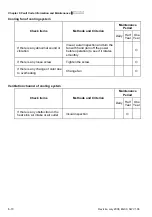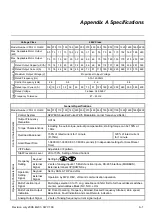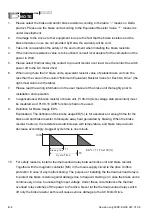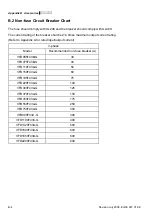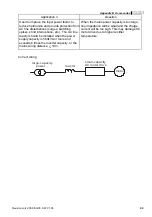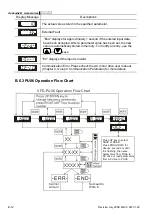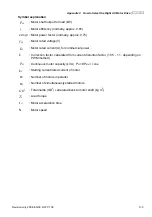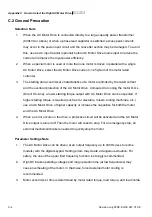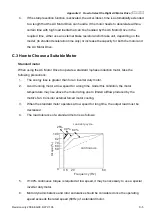
Appendix B Accessories
|
B-2
Revision July 2008, EG03, SW V1.06
NOTE
1.
Please select the brake unit and/or brake resistor according to the table. “-“ means no Delta
product. Please use the brake unit according to the Equivalent Resistor Value. ‘’*’’ means it is
under development.
2.
If damage to the drive or other equipment is due to the fact that the brake resistors and the
brake modules in use are not provided by Delta, the warranty will be void.
3.
Take into consideration the safety of the environment when installing the brake resistors.
4.
If the minimum resistance value is to be utilized, consult local dealers for the calculation of the
power in Watt.
5.
Please select thermal relay trip contact to prevent resistor over load. Use the contact to switch
power off to the AC motor drive!
6.
When using more than 2 brake units, equivalent resistor value of parallel brake unit can’t be
less than the value in the column “Minimum Equivalent Resistor Value for Each AC Drive” (the
right-most column in the table).
7.
Please read the wiring information in the user manual of the brake unit thoroughly prior to
installation and operation.
8.
In applications with brake resistor or brake unit, Pr.06-00 (Over-voltage stall prevention) must
be disabled. And Pr.08-18 (AVR function) shall not be used.
9.
Definition for Brake Usage ED%
Explanation: The definition of the brake usage ED(%) is for assurance of enough time for the
brake unit and brake resistor to dissipate away heat generated by braking. When the brake
resistor heats up, the resistance would increase with temperature, and brake torque would
decrease accordingly. Suggest cycle time is one minute.
100%
T0
T1
Braking Time
Cycle Time
ED% = T1/T0x100(%)
10. For safety reasons, install a thermal overload relay between brake unit and brake resistor.
Together with the magnetic contactor (MC) in the mains supply circuit to the drive it offers
protection in case of any malfunctioning. The purpose of installing the thermal overload relay is
to protect the brake resistor against damage due to frequent braking or in case the brake unit is
continuously on due to unusual high input voltage. Under these circumstances the thermal
overload relay switches off the power to the drive. Never let the thermal overload relay switch
off only the brake resistor as this will cause serious damage to the AC Motor Drive.
Summary of Contents for AC Motor Drive VFD-G
Page 1: ......
Page 2: ......
Page 3: ......
Page 141: ...Chapter 4 Parameters 4 90 Revision July 2008 EG03 SW V1 06 This page intentionally left blank...

